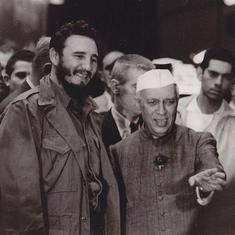For many, the term raagmala or “garland of raags” conjures up images of Raag Mala paintings from the medieval period. These works incorporate elements of painting, poetry and music, standing witness to a time when the arts were treated as a composite whole. Not only do the works portray the painters’ visual interpretation of the raags, but some include descriptive verses for the raags.
These paintings were based on the prevalent classification of raags that described major raags as males, each with many wives called raaginis and with many sons called raagputras. As mentioned by Ashok Da. Ranade in his Music Contexts: A Concise Dictionary of Hindustani Music, the raag-raagini element may have been inspired by the Shiva-Shakti or Purush-Pakriti principle embodied in the Indian philosophical tradition or by the nayak-nayika or hero-heroine theory contained in the Natyashastra. But it also seems to have reflected a patriarchal and polygamous societal structure. This classification was popular in Hindustani music until the nineteenth century.
Thereafter, and until today, most teaching institutions for Hindustani music, follow the system of classification that was introduced by music educationist Vishnu Narayan Bhatkhande (1860-1936) in the early twentieth century. However, and notably so, there were and are also other systems of classifying raags that continue to be followed by practitioners.
The Indian subcontinent has always seen a strong link between religion and music and places of worship were avenues of patronage for musicians. It is therefore not surprising to find specific raags being prescribed for verses contained in various religious texts. The same is true of the Shree Guru Granth Sahib, the holy book of the Sikhs. But interestingly, this text also describes the raagmala classification. The authorship of the relevant verse is unknown and it is believed to have been added later to the original text. Here are three versions of the same verse. The first has a simple melodic line that runs through the verse, whereas the others demonstrate the main raags mentioned in the verse.
In the context of Hindustani music practice, the raagmala assumes a distinct musical form. This has nothing to do with the raag classification mentioned earlier. It is often called raagsagar or “an ocean or a sea of raags”. Special vocal compositions have been created to arrange specific raags in a sequence so as to flow from one to the other in a seamless manner. The text often incorporates the names of the each of the raags that have been chosen for the composition. The command of the composer over the craft is evident in such compositions, as it requires great skill and aesthetic acumen to immediately and precisely navigate from one to the other raag. The performer also needs to be equally precise and tuneful in the rendition, exercising restraint in not showing off vocal jugglery and yet portraying essential features of each of the raags contained in the composition.
The concluding track is a raagmala presented by renowned vocalist Jitendra Abhisheki. Composed by scholar-musician Bholanath Bhatt, the piece is set to Ektaal, a cycle of 12 matras or time units.
More raagmala renditions follow next week.
Family music: A flashback to the time raags had many wives and sons
Raag Mala paintings, which were visual interpretations of raags, reflected society's patriarchal and polygamous structure.










